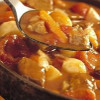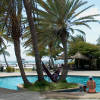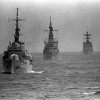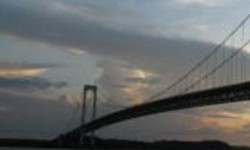Maracaibo Part II
¡Maracaibo has too many things to show! This is the second part. If you want to see the first click here..
Maracaibo, an important sports centre
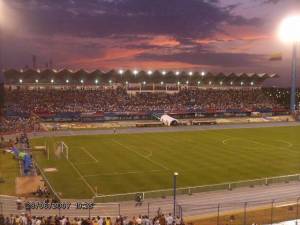
Pachencho Romero Stadium during the Copa America
>Photo: Alberto Chirinos
Maracaibo is a major sports centre of Venezuela. It was the city chosen by the organizers of the Copa America – Venezuela 2007 to host the final. It is headquarters of Athletes Union Maracaibo, one of the best football teams of Venezuela, as well as the Águilas del Zulia a major baseball team.
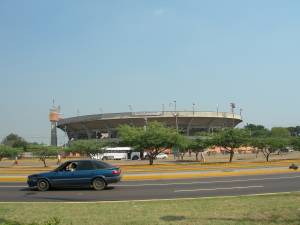
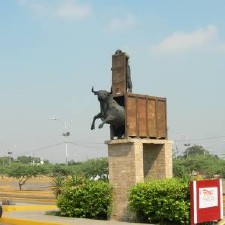
The “Plaza de Toros” is one of the most important of Venezuela, with capacity for 15,000 spectators, hosts bullfights in honor of the Virgin of Chiquinquira, every November.
Maracaibo’s art centre – Lia Bermudez
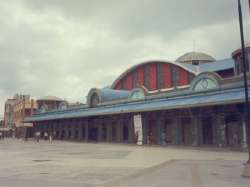
The headquarters of what is now the Lia Bermudez Arts Center (LB-CAM), served for over 40 years, as seat of the Main Market in the city. Its history goes back towards the end of the twentieth century, when the old market that was built there in 1866 was destroyed by a voracious fire incident that left Maracaibo on July 21, 1927, without its most important shopping center.
The government of the time preceded by General Vincencio Perez Soto had to find a quick solution to restore to the population of Maracaibo their mall, which is why after many proposals, they decided that it should be an iron structure, very fashionable at that time in France, Germany, England and the United States. Since England moved the entire structure totally disarmed and transported it by boat to the port of Maracaibo. It’s lifting and conditioning was extended from 1928 to 1930. The new market opened its doors to the public on August 9, 1931 until October 7, 1973, when all its activities cease because it was displaced by another structure of similar features: the "Las Pulgas” market.
Since 1973 it was decided to remodel and convert the old market in to Popular Culture Centre in order to introduce and promote artistic and cultural expressions typical of Zulia. This experience lasts until October 1982 when they closed their doors again. In 1979 the sculptor, Lia Bermudez, being the secretary of Culture proposes to the government to refurbish the building that was already restructured. On July 7, 1990 after waiting more than a decade, the governor of Zulia State back then, Oswaldo Alvarez Paz, established by decree the Maracaibo Centre for Arts - Lia Bermudez (LB-CAM). The old Main Market was named the head quarters.
On October 16, 1990, under a new decree, the Foundation of State for LB-CAM was established. Then was the restructuring and upgrading work started. On November 4, 1993 it was inaugurated. The Minister of Culture, doctor Jose Antonio Abreu, declares it museum, and it was given to de National Network of Museums in Venezuela.
Plaza Baralt, shopping centre from the population of Maracaibo
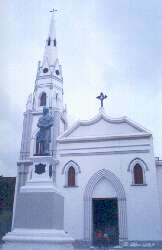
Temple of San Francisco
and monument to Baralt
When they arrived to Maracaibo, The Franciscans congregation built a convent in 1615 that served as home for the religious order; they also built a temple to which was given the name of San Francisco in honor of the patron saint of the congregation. In front of the temple in San Francisco there was a huge rectangle of land that had as south border the seawall of the ports . Taking into account the presence of the main market and the seawalls, this space became a central point of the commercial activities of Maracaibo.
On February 9, 1882 Mr. Manuel A. Lares, Alcira Villanueva, Adolfo Pardo, Julio Martinez, Julio C. Belloso, Marcial Lopez, Nectarios Finol, Ricardo Villalobos Jesus Carruyo and Jose Parra, met at the nr.10 house of the commerce street with the aim of founding a group named Baralt that would raise funds to build a monument to the zulian writer Rafael Maria Baralt.
The Baralt group chose as site for building such work the front of the temple square of San Francisco. On October 24, 1888 at 5 p.m., the statue of Rafael Maria Baralt was revealed. The large rectangle with the name "Boulevard Baralt" lost with time the word Boulevard, becoming known as Plaza Baralt.
This place hosted many of the main events of the city, because of it central location. The deterioration of the houses, the street sellers, the bus stops, deteriorated the place. In the decade of the 70s, because of this, the Maracaibo Urban Renovation Plan was created, it included also the remodelation of the “Plaza Baralt”
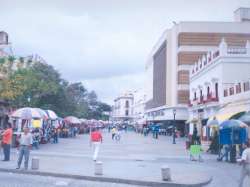
Boulevard Baralt
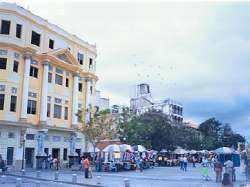
Plaza Baralt
Maracaibo and not visiting the “Plaza Baralt” is like not being in the city at all. This square and holds the memory of those times… Here the Zulian heat is really felt.
Lake towns that still exist in Maracaibo
Nowadays, there are still villages which have remained in the waters of Lake Maracaibo, this is the case of the Santa Rosa palafitos (Houses built over water) located at the north of the city. In this place is common to find children with Indian characteristics bathing in the water and in canoes going back and forth. The Santa Rosa palafitos have saved on its structure the memories of our forefathers, now becoming a tourist stop where you can taste and enjoy the richest delicacies in an exotic place outdoors and on water.
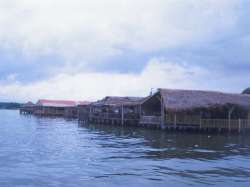
Palafitos de Santa Rosa
Another village can be found at the Sinamaica Lagoon., located north of Zulia State. This lagoon is really a fantasy: here are not only tourist inns, but also dozens of families, grocery stores, pharmacies and any store that trades within the waters.
Its particular communication from one place to another via boats and canoes, its majestic town that seems planted over the water, their culture, their customs and idiosyncrasies have turned Sinamaica Lagoon into one of the most important tourist and recreational places in the region of Zulia.
La Chinita, virgin of the people of Zulia
The spiritual life of the people of Zulia of the time was based on the devotion of the holy Apostles Peter and John of San Sebastian and “La Virgen del Rosario de Chiquinquira”, which was brought by Don Juan Nieves de Andrade in the late seventeenth century . This man built a shrine made out of bahareque and straw upon his arrival in Maracaibo. He placed there a table with the image of the “Virgen del Rosario de Chiquinquira”,copy of the venerated image in the region of Santa Fe de Bogotá, in New Granada (now Colombia).

Because of time, the image started to lose its paint, and finally became totally erased. After that it lost its religious interest, and finally ended up in the lake.
It was a morning in 1749 when the white beaches of Lake Maracaibo appeared a piece of table, while in a little old woman, in the water, washed clothes by the lake. As the night fell, the old lady was not able to recognize the table anymore. She brought it to her home were it served in the kitchen.
One day, the old lady saw the image in the old table. She then hanged it by the wall, and started to venerate it. One 18th of November, odd movements broke the silence in the house. Strange noises were felt. When the old lady came to see what was happening, she then saw mysterious lights coming out of the table.
After seeing such a majestic appearance, the old lady fell to her knees and saw the image of a sweet faced, dark skinned, and Chinese eyes woman, carrying in her arms a lovely child; it was the holy Virgin of Chiquinquira, who stopped being an image to appear in real dimensions. A miracle! A miracle! Shouted the old lady, a miracle! Shouted the neighbors that admired the table and after it appeared worshiped her over and over again. This humble home became centre of prayers and worship to the mother of Christ.
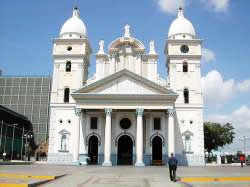
All November 18 have been since then, fest date for the faithful believers of Zulia and its surroundings, without being decreed by any civil or ecclesiastical law. With music to the sound of the “gaitas”, fireworks that illuminates the sky of Maracaibo. with drums, orchestral band, accompanying the Virgin in its journey through the streets of “The Miracle”.
Ver además
Tarcarí de Chivo - El tarcarí de chivo es un plato típico del occidente venezolano, es una preparación sencilla y reconocida en nuestra tierra, se prepara guisando el chivo, pero en este caso se agrega picante a la cocción y se deja reducir en vino tinto, por lo que el sabo |
Coche Island - This arid Island is located south from Margarita. It reaches a top height of 60 meters above sea level and it is 11 km long and 6km wide. | ||
House cleaners of Zulia - These lizards belong to the great cosmopolitan family of the "geckos ", called Gekkonidae. Numerous species inhabit the tropics and are well-known to live inside or near human dwellings, where they are usually seen walking at night by walls and roofs, hun |
La Batalla del Lago de Maracaibo - Librada el 24 de julio de 1823 resultó una acción decisiva en las campañas navales de la Independencia. En dicha batalla se enfrentó la escuadra republicana dirigida por el general José Prudencio Padilla, comandante del tercer departamento de Marina y de | ||
Venancio Pulgar - Célebre caudillo zuliano del siglo XIX. Fueron sus padres Venancio Pulgar y María del Rosario Roldán. En 1862, en el marco de la Guerra Federal (1859-1863), se enfrenta y controla una revuelta en la ciudad de Maracaibo, en contra de gobierno de José Anton |
Fin Espacio Publicitario

